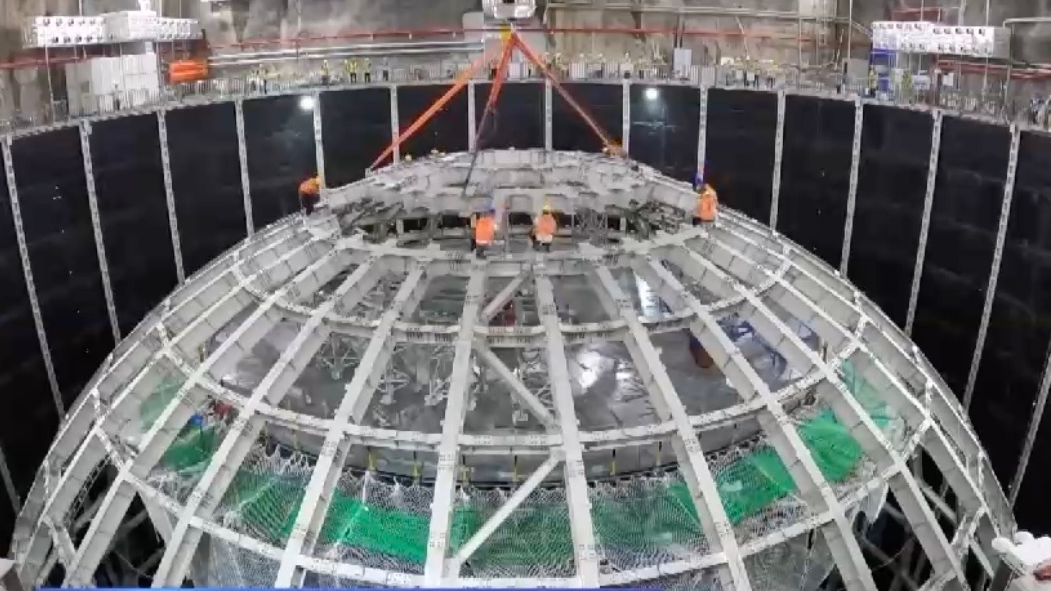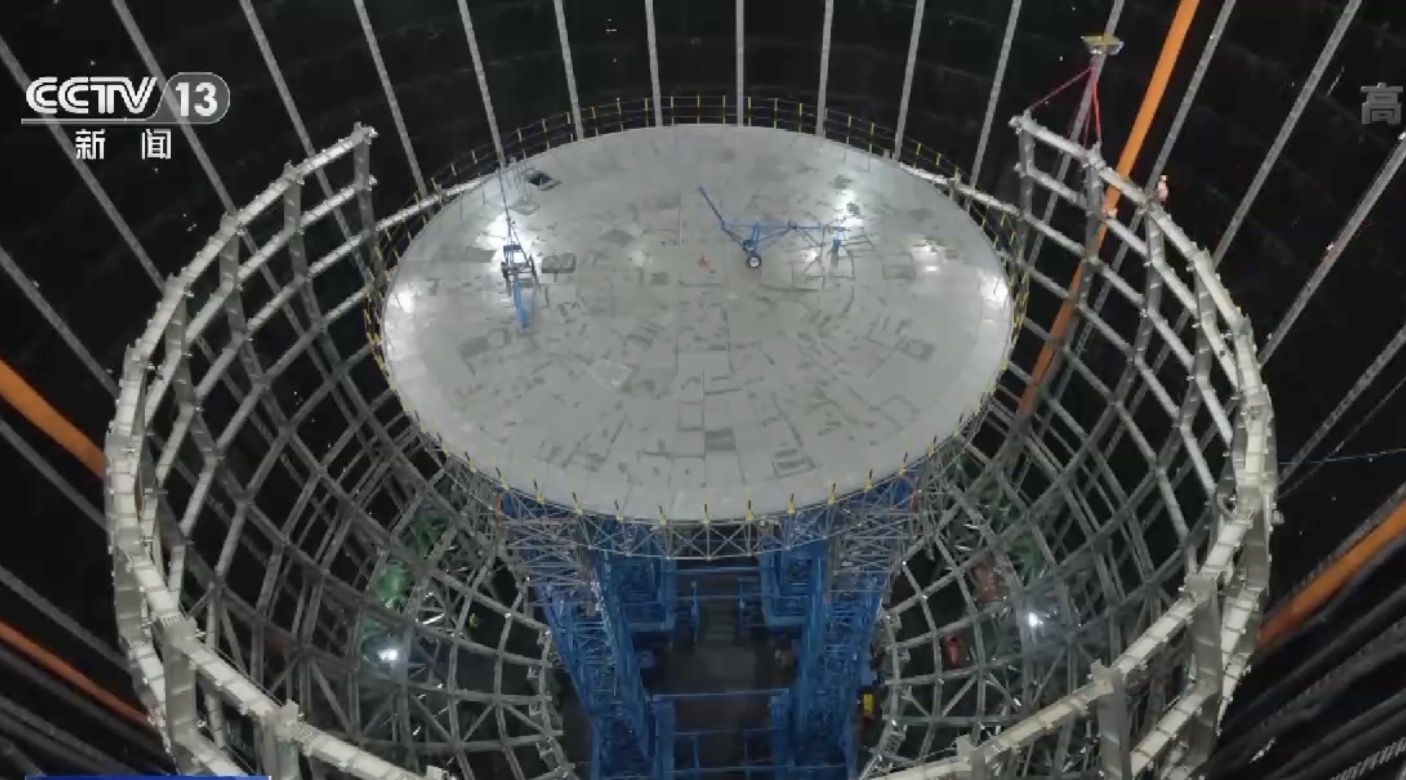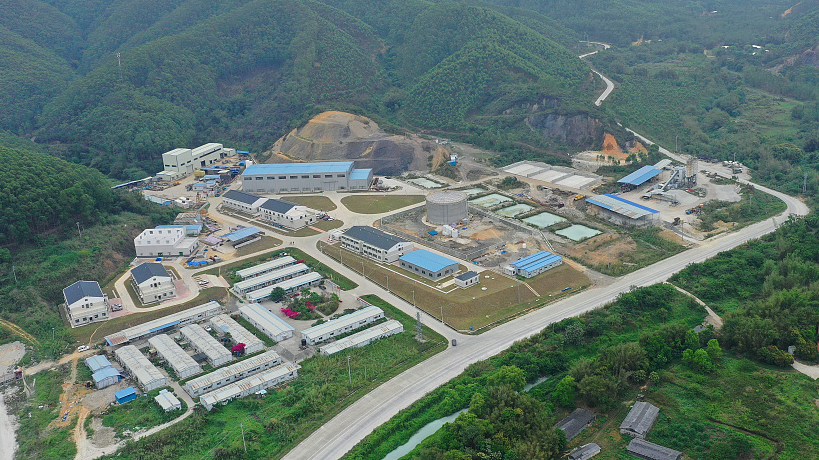
The plexiglass spherical structure, the core structure for China's next-generation neutrino detector, the Jiangmen Underground Neutrino Observatory (JUNO), in Jiangmen City of south China's Guangdong Province. /China Media Group
The plexiglass spherical structure, the core structure for China's next-generation neutrino detector, the Jiangmen Underground Neutrino Observatory (JUNO), in Jiangmen City of south China's Guangdong Province. /China Media Group
Engineers are assembling a plexiglass spherical structure, the core structure for China's next-generation neutrino detector, the Jiangmen Underground Neutrino Observatory (JUNO), in Jiangmen City of south China's Guangdong Province.
With a wall thickness of 120 millimeters and weighing more than 600 tonnes, it is the largest single plexiglass structure in the world, with unprecedented production and construction.
Upon completion, the plexiglass spherical structure will be filled with 20,000 tonnes of liquid scintillator, the target substance for capturing neutrinos, which are tiny light particles with no electrical charge.

The core structure for China's next-generation neutrino detector, the Jiangmen Underground Neutrino Observatory (JUNO), in Jiangmen City of south China's Guangdong Province. /China Media Group
The core structure for China's next-generation neutrino detector, the Jiangmen Underground Neutrino Observatory (JUNO), in Jiangmen City of south China's Guangdong Province. /China Media Group
In order to ensure accuracy of the detector's data analysis, the size and position of each board and layer need to be strictly controlled during assembling.
The 35.4-meter-tall plexiglass spherical structure is being assembled in the middle of the main structure, a spherical stainless-steel grid, which was completed in June.
The whole structure is constructed at the center of a 44-meter-deep water pool in a huge cave in Jiangmen City. The main structure will be covered by 20,000 light detecting photomultiplier tubes of 51-centimeter long with many other components.

A view of the Jiangmen Underground Neutrino Observatory (JUNO) in Jiangmen City of south China's Guangdong Province. /CFP
A view of the Jiangmen Underground Neutrino Observatory (JUNO) in Jiangmen City of south China's Guangdong Province. /CFP
"Its a unique design changing the structure of large neutrino detectors from three layers to two layers," said Wang Yifang, head of the Institute of High Energy Physics under the Chinese Academy of Sciences (CAS), and a member of the CAS.
"In the past, the steel structure used to have water outside and mineral oil inside. After the three-layer structure becomes a two-layer one, the steel ball becomes steel beams, and the layer of mineral oil will be replaced by water, which greatly reduces the cost."
The 2-billion-yuan (about $305.3 million) instrument is expected to be completed and put into use around 2023.
The new machine is designed to detect and measure neutrinos' quality order with unprecedented precision and energy resolution, with the aim of uncovering more insight on their mass, how they can change identities while traveling in a process called oscillation and solve more mysteries about the perplexing elementary particle, which is both extremely abundant and difficult to spot, according to the CAS.
Read More:
China completes main structure of its neutrino detector

